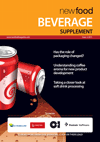Beverage Supplement 2011
5 January 2012 | By Jos Oostendorp, Packaging Specialist, Royal Grolsch Brewery / Josef Kerler and Luigi Poisson, Aroma and Taste Modulation Group, Nestlé Product Technology Centre / Jim Wilson, Director Product Commercialisation, Coca-Cola Refreshments
Has the role of packaging changed? (Jos Oostendorp, Packaging Specialist, Royal Grolsch Brewery)Understanding coffee aroma for new product development (Josef Kerler and Luigi Poisson, Aroma and Taste Modulation Group, Nestlé Product Technology Centre)Taking a closer look at soft drink processing (Jim Wilson, Director Product Commercialisation, Coca-Cola Refreshments)





